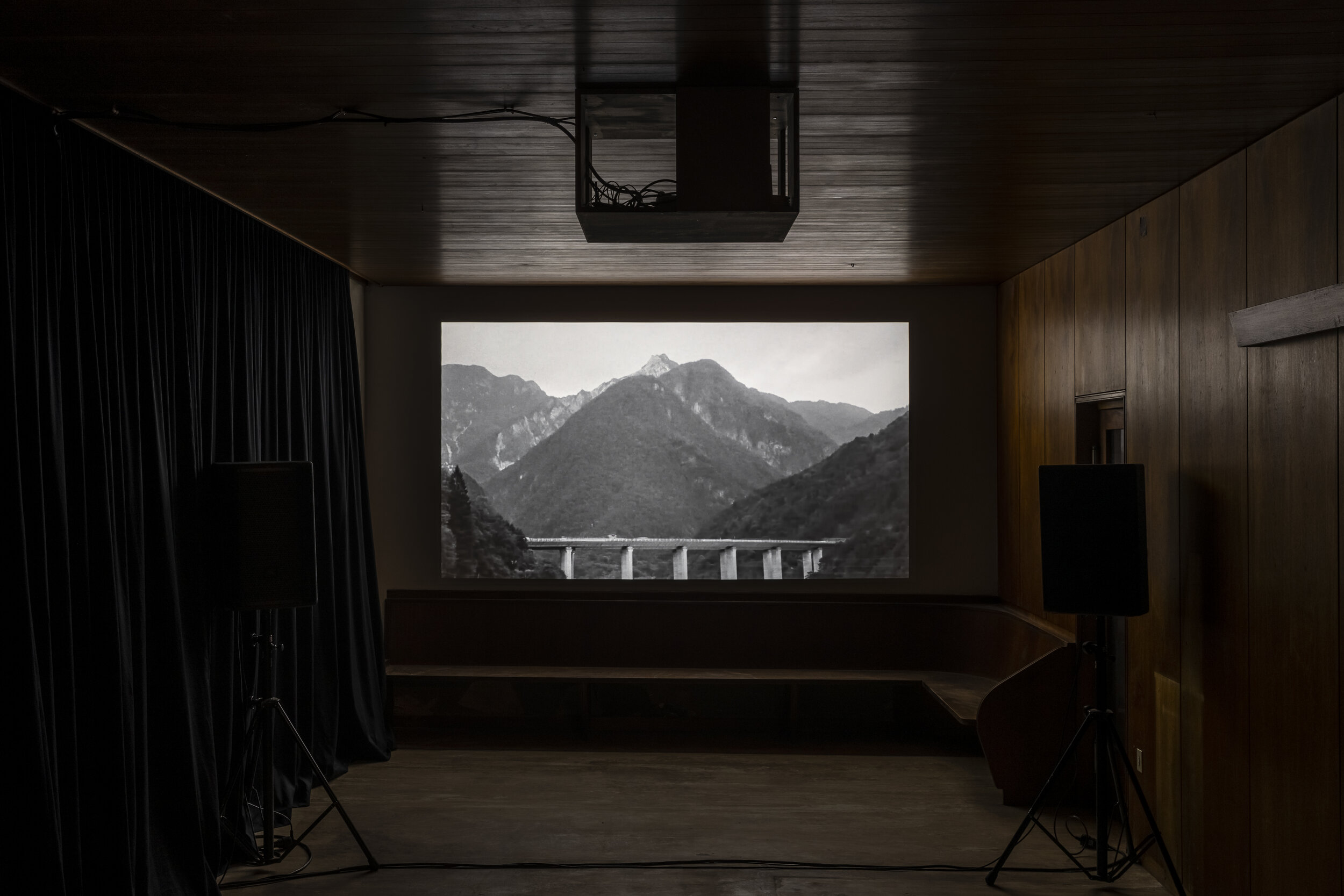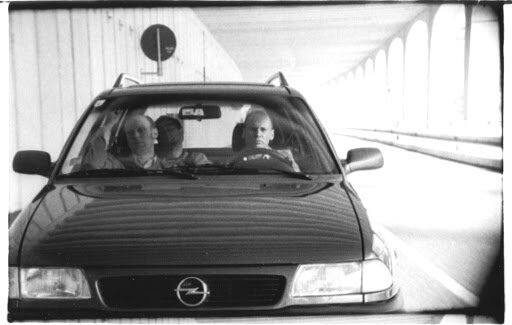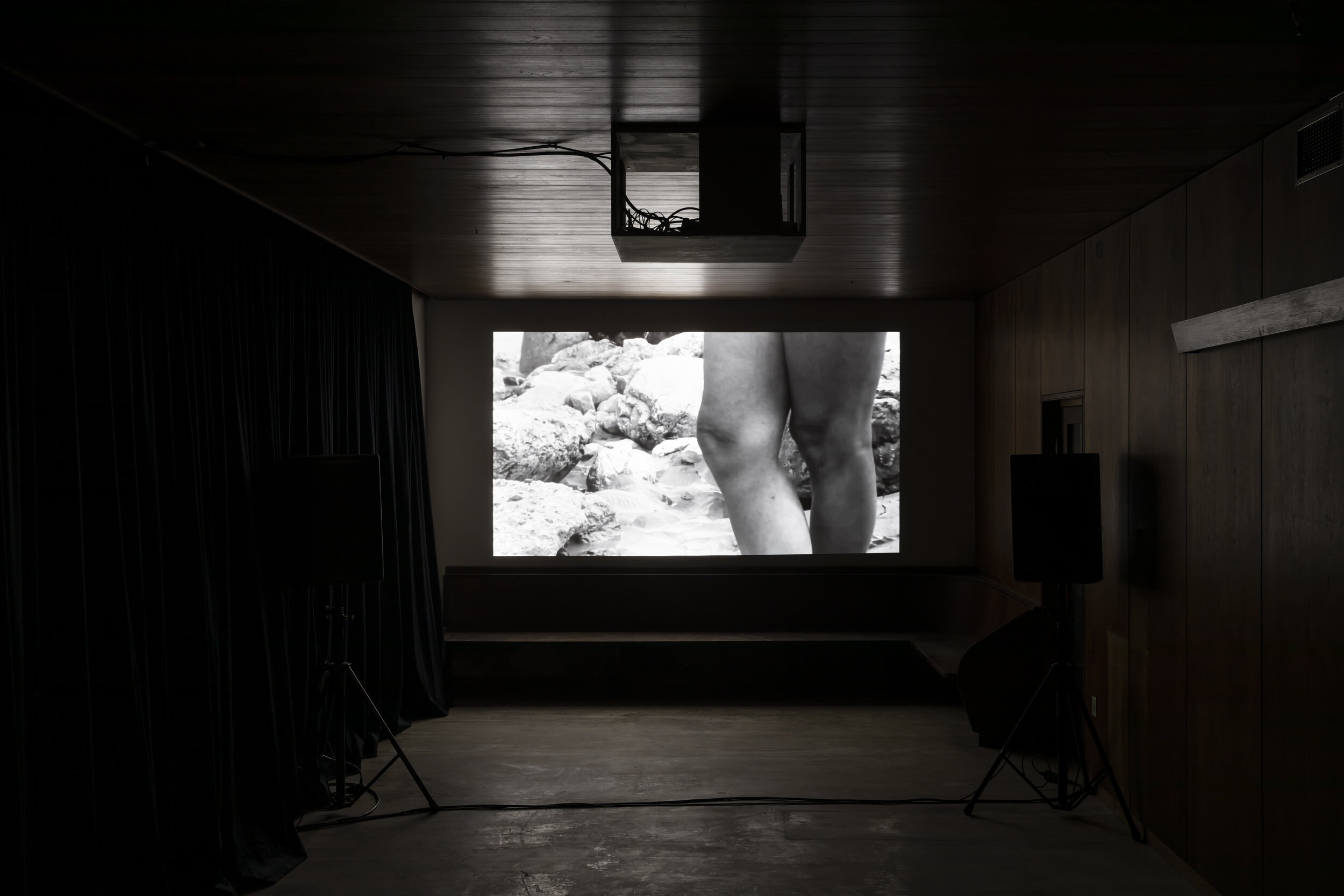
Josef Dabernig
*1956, Austria
lives and works in Vienna, Austria
EN
On the occasion of the Biennale Gherdëina, the Austrian artist Josef Dabernig (*1956, Austria), in collaboration with curator Adam Budak, conceived a project entitled Cinema of Worldmaking, in the course of which he converted the old dining room of the Hotel Ladinia, a building at the historical heart of St. Ulrich/Ortisei that has been standing empty for years. For the entire duration of the biennial, the Cinema of Worldmaking every day presented a selection of short and feature-length films by artists. On the Worldmaking Cinema Fridays, moreover, some films were shown that have written cinematic history, such as Uccellacci e uccellini (The Hawks and the Sparrows) by Pier Paolo Pasolini from 1965 or Brutti, sporchi e cattivi (Ugly, Dirty and Bad) by Ettore Scola from 1976. Among the artist videos there are also some short film by Dabernig himself. In fact, the artist began his career, in the early eighties, as a sculptor, turned filmmaker in 1996 and soon gained international recognition. His films often are set in rough sceneries, take an existentialist approach, and come in a minimal and dry, ordered and well-structured style. The modernist language of international post-war architecture plays a major role for Dabernig’s work as an artist. His formal structure, as a codification of the social and political history at times is changed through hybrid texts and a romantic plot.
Another video by Dabernig was presented at the waiting room of a dental practice in St. Ulrich. Heavy Metal Detox is an aesthetic circumlocution, as it were, starting out from a procedure the artist has done on his own body in order to have his dental fillings removed. Taking on a spiritual and existential, sarcastic and nihilist perspective, the operation intensifies into a cantata coming in a cinematic format.
And finally, Dabernig is also represented in the biennial with sculptural works from the beginnings of his artistic career that were created during his studies at the Universty of Applied Arts in Vienna under the guidance of his teacher Joannis Avramidis. The latter didn’t allow Dabernig to conclude his studies with some drawings and theoretical concepts, but instead demanded the production of an actual sculpture. The figurative form language of these early works, which Dabernig largely distanced himself from after his studies, down to this day provide an insight into the development of his minimalist style, that also has had a strong influence on his sculptural oeuvre of recent years. This fallback on his first sculptural works can be understood as a conceptual answer and reference to the sculptural tradition of the Val Gardena itself.
IT
In occasione della Biennale Gherdëina, l’artista austriaco Josef Dabernig (*1956, Austria) ha realizzato un progetto intitolato Cinema of Worldmaking in collaborazione con il curatore Adam Budak, dove ha trasformato in una sala cinema la vecchia sala da pranzo dell’Hotel Ladinia, una struttura che si trova nel centro storico di Ortisei, in Val Gardena, e in disuso ormai da anni. Ogni giorno, per tutta la durata della biennale, il Cinema of Worldmaking ha proiettato una selezione di cortometraggi e lungometraggi d’artista. I venerdì, inoltre, durante i Worldmaking Cinema Fridays sono stati proiettati alcuni film che hanno fatto la storia del cinema, come “Uccellacci e uccellini” (1965) di Pierpaolo Pasolini o “Brutti, sporchi e cattivi” (1976) di Ettore Scola. Tra i video degli artisti presentati, anche cortometraggi di Dabernig stesso. L’artista infatti ha iniziato la sua carriera all’inizio degli anni Ottanta come scultore per poi diventare regista nel 1996, acquistando rapidamente fama internazionale. I suoi film sono spesso ambientati su scenari aspri e dal tocco esistenzialista e raccontano la sua passione per uno stile minimo e asciutto, ordinato e ben strutturato. Nel dibattito artistico su Dabernig, gioca un ruolo importante il linguaggio modernista dell’architettura del dopoguerra diffusosi a livello a livello internazionale. La sua struttura formale come codifica della storia sociale e politica è talvolta trasformata da testi ibridi e da una trama romantica.
Un altro video di Josef Dabernig è stato inoltre presentato nella sala d’attesa di uno studio dentistico di Ortisei. “Heavy Metal Detox” è una parafrasi estetica che prende le mosse da un intervento che subisce l’artista stesso a cui viene rimossa la pasta delle sue otturazioni dentali. L’operazione – rivista da una prospettiva spirituale ed esistenziale, sarcastica e nichilistica – si condensa in una cantata in formato cinematografico.
Infine, Dabernig è presente anche con un’opera scultorea dei primi anni della sua carriera artistica, realizzata durante gli studi all’Accademia di Vienna sotto la supervisione del suo insegnante Joannis Avramidis. L’insegnante non permise a Dabernig di laurearsi senza una vera e propria scultura, cioè solo con alcuni disegni e dei concetti teorici. Il linguaggio formale figurativo di queste sue prime opere, da cui Dabernig si è in gran parte allontanato dopo gli studi di scultura, riesce comunque a dare un’idea dell’evoluzione del suo stile minimalista che ha influenzato ampiamente anche le sue opere scultoree degli ultimi anni. Questo ricorso alle sue prime opere scultoree ha voluto allora essere una risposta concettuale e un esame della tradizione scultorea della Val Gardena.
DE
Anlässlich der Biennale Gherdëina hat der österreichische Künstler Josef Dabernig (*1956, Österreich) in Zusammenarbeit mit dem Kurator Adam Budak ein Projekt mit dem Titel Cinema of Worldmaking geschaffen, in dessen Rahmen er den alten Speisesaal des Hotel Ladinia, ein Gebäude im historischen Zentrum von St. Ulrich in Gröden, das seit Jahren nicht mehr genutzt wird, in ein Kino transformiert hat. Während der gesamten Dauer der Biennale hat das Cinema of Worldmaking jeden Tag eine Auswahl von Kurz- und Spielfilmen von Künstlern gezeigt. Im Rahmen des Worldmaking Cinema Fridays wurden außerdem einige Filme gezeigt, die Kinogeschichte geschrieben haben, wie „Uccellacci e uccellini” (Große Vögel, kleine Vögel) von Pier Paolo Pasolini aus dem Jahr 1965, oder „Brutti, sporchi e cattivi” (Die Schmutzigen, die Häßlichen und die Gemeinen) von Ettore Scola aus dem Jahre 1976. Unter den Videos der vorgestellten Künstler sind auch einige Kurzfilme von Dabernig selbst. Tatsächlich begann der Künstler seine Karriere Anfang der achtziger Jahre als Bildhauer, wurde 1996 Filmemacher und damit rasch international wahrgenommen. Seine Filme sind oft in rauen Szenarien angesiedelt, mit einem existenzialistischen Ansatz und in einem minimalen und trockenen, geordneten und gut strukturierten Stil. In der künstlerischen Auseinandersetzung spielt bei Dabernig die modernistische Sprache der Nachkriegsarchitektur auf internationaler Ebene eine wichtige Rolle. Seine formale Struktur als Kodifizierung der sozialen und politischen Geschichte wird manchmal durch hybride Texte und eine romantische Handlung verändert.
Ein weiteres Video von Josef Dabernig wurde im Wartezimmer einer Zahnarztpraxis in St. Ulrich präsentiert. „Heavy Metal Detox” ist eine ästhetische Paraphrase, ausgehend von einem Eingriff, den der Künstler an seinem eigenen Körper durchführen lässt, um die Füllungen seiner Zahnplomben zu entfernen. Die Operation verdichtet sich aus einer spirituellen und existenziellen, sarkastischen und nihilistischen Perspektive zu einer Kantate im filmischen Format.
Schließlich ist Dabernig auch mit skulpturalen Werken aus den Anfangsjahren seiner künstlerischen Laufbahn vertreten, die während seines Studiums an der Wiener Akademie unter der Leitung seines Lehrers Joannis Avramidis entstanden. Der Lehrer erlaubte Dabernig nicht, sein Studium nur mit Zeichnungen und Konzepten abzuschließen, er verlangte die Produktion einer echten Skulptur. Die figurative Formensprache dieser frühen Werke, von der sich Dabernig nach seinem Studium der Bildhauerei weitgehend distanziert hat, vermittelt noch heute eine Vorstellung von der Entwicklung seines minimalistischen Stils, der auch sein bildhauerisches Werk in den letzten Jahren stark beeinflusst hat. Dieser Rückgriff auf seine ersten bildhauerischen Werke kann als konzeptuelle Antwort und Auseinandersetzung mit der bildhauerischen Tradition des Grödnertals verstanden werden.
Program
Programma
Programm
Cinema of Worldmaking
Daily from /
Ogni giorno da /
Täglich von
10.00 – 12.30
Josef Dabernig, 1956, Austria
Hotel Roccalba, 2008, 10 ‘
Sharon Lockhart,1964, USA
Pine Flat, 2005, 139 ‘
Daily from /
Ogni giorno da /
Täglich von
15.00 – 19.30
Wisla, 1996, 8 ‘
Josef Dabernig, 1956, Austria
Jogging, 2000, 11 ‘
Josef Dabernig, 1956, Austria
WARS, 2001, 10 ‘
Josef Dabernig, 1956, Austria
Generación, 2019, 6 ’45 ”
Marco A. Castillo, 1971, Cuba
Rosa coeli, 2003, 24 ‘
Josef Dabernig, 1956, Austria
Painting With History In a Room Filled
With People With Funny Names, 2016, 24 ‘
Korakrit Arunanondchai, 1986, Thailand
Lancia Thema, 2005, 17 ‘
Josef Dabernig, 1956, Austria
Geological Evidences, 2019, 10 ‘
Matthew C. Wilson, 1982, USA
Per Speculum, 2006, 6 ’53 ”
Adrian Paci, 1969, Albania
Prova, 2019, 10 ’16 ”
Adrian Paci, 1969, Albania
Hypercrisis, 2011, 17 ‘
Josef Dabernig, 1956, Austria
The Mesh and the Circle,2014, 34 ’35 ”
Mariana Calo & Francisco
Queimadela, 1984 / 1985, Portugal
River Plate, 2013, 16 ‘
Josef Dabernig, 1956, Austria
Luminous Shadow, 2018, 21 ’57 ”
Mariana Calo & Francisco
Queimadela, 1984 / 1985, Portugal
Zlaté Piesky Rocket Launch, 2015, 10 ‘
Josef Dabernig, 1956, Austria
Eine Million Kredit ist normal, sagt mein Großvater, 2006, 22 ‘
Gabriele Mathes, 1960, Austria
Stabat Mater, 2016, 16 ‘
Josef Dabernig, 1956, Austria
Worldmaking
Cinema Fridays
14 August / agosto / August 2020
Ettore Scola
”Brutti, sporchi e cattivi”
21 August / agosto / August 2020
Pier Paolo Pasolini
“Uccellacci e uccellini”
28 August / agosto / August 2020
Pier Paolo Pasolini
“Il Vangelo secondo Matteo”
04 September / settembre / September 2020
Fritz Lehner
“Notturno”
11 September / settembre / September 2020
Fritz Lehner
“Notturno”







